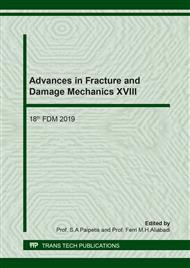p.222
p.228
p.234
p.240
p.246
p.252
p.258
p.263
p.269
High-Temperature Creep Tests of Two Creep-Resistant Materials at Constant Stress and Constant Load
Abstract:
Creep is defined as a time dependent component of plastic deformation. Creep tests can be performed either at constant load or at constant applied stress. Engineering creep tests carried out at constant load are aimed at determination of the creep strength or creep fracture strength, i.e. the data needed for design. The constant stress tests are important as a data source for fundamental investigations of creep deformation and fracture mechanisms and for finite element modelling of more complex stress situations. For some materials, the difference between the two type of testing can be very small, while for other materials is large, depending on the creep plasticity of the material under testing. The paper aims to compare the creep results of two different creep-resistant materials: the advanced 9%Cr martensitic steel (ASME Grade P91) and a Zr1%Nb alloy obtained by both testing methods and to clarify the decisive factors causing observed differences in their creep behaviour.
Info:
Periodical:
Pages:
246-251
Citation:
Online since:
December 2019
Authors:
Keywords:
Price:
Сopyright:
© 2020 Trans Tech Publications Ltd. All Rights Reserved
Share:
Citation:


